DL-Dithiothreitol
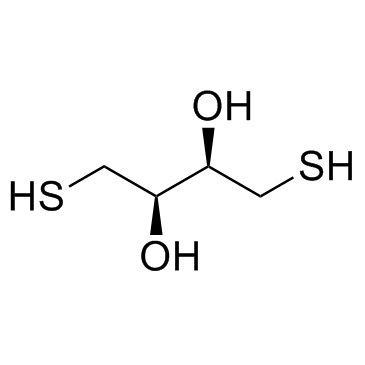
DL-Dithiothreitol structure
|
Common Name | DL-Dithiothreitol | ||
|---|---|---|---|---|
| CAS Number | 3483-12-3 | Molecular Weight | 154.251 | |
| Density | 1.3±0.1 g/cm3 | Boiling Point | 364.5±42.0 °C at 760 mmHg | |
| Molecular Formula | C4H10O2S2 | Melting Point | 38-43ºC | |
| MSDS | Chinese USA | Flash Point | 174.2±27.9 °C | |
| Symbol |

GHS07 |
Signal Word | Warning | |
Use of DL-DithiothreitolDTT is a small-molecule redox reagent. |
| Name | 1,4-dithiothreitol |
|---|---|
| Synonym | More Synonyms |
| Description | DTT is a small-molecule redox reagent. |
|---|---|
| Related Catalog | |
| References |
| Density | 1.3±0.1 g/cm3 |
|---|---|
| Boiling Point | 364.5±42.0 °C at 760 mmHg |
| Melting Point | 38-43ºC |
| Molecular Formula | C4H10O2S2 |
| Molecular Weight | 154.251 |
| Flash Point | 174.2±27.9 °C |
| Exact Mass | 154.012222 |
| PSA | 118.06000 |
| LogP | 0.07 |
| Vapour Pressure | 0.0±1.8 mmHg at 25°C |
| Index of Refraction | 1.579 |
| InChIKey | VHJLVAABSRFDPM-QWWZWVQMSA-N |
| SMILES | OC(CS)C(O)CS |
| Storage condition | 2-8°C |
| Stability | Stability Stable, but heat sensitive. Incompatible with strong oxidizing agents. Keep frozen at -20 to -10 C. |
| Water Solubility | H2O: 50 mg/mL, clear, colorless | freely soluble |
CHEMICAL IDENTIFICATION
HEALTH HAZARD DATAACUTE TOXICITY DATA
|
| Symbol |

GHS07 |
|---|---|
| Signal Word | Warning |
| Hazard Statements | H302-H315-H319-H335 |
| Precautionary Statements | P261-P305 + P351 + P338 |
| Personal Protective Equipment | dust mask type N95 (US);Eyeshields;Faceshields;Gloves |
| Hazard Codes | Xn:Harmful |
| Risk Phrases | R22;R36/37/38 |
| Safety Phrases | S26-S37/39 |
| RIDADR | UN 3335 |
| WGK Germany | 3 |
| RTECS | EK1610000 |
| HS Code | 2930909090 |
| HS Code | 2930909090 |
|---|---|
| Summary | 2930909090. other organo-sulphur compounds. VAT:17.0%. Tax rebate rate:13.0%. . MFN tariff:6.5%. General tariff:30.0% |
|
Immunomodulation by the Pseudomonas syringae HopZ type III effector family in Arabidopsis.
PLoS ONE 9(12) , e116152, (2014) Pseudomonas syringae employs a type III secretion system to inject 20-30 different type III effector (T3SE) proteins into plant host cells. A major role of T3SEs is to suppress plant immune responses ... |
|
|
Targeting glucose uptake with siRNA-based nanomedicine for cancer therapy.
Biomaterials 51 , 1-11, (2015) Targeting cancer metabolism is emerging as a successful strategy for cancer therapy. However, most of the marketed anti-metabolism drugs in cancer therapy do not distinguish normal cells from cancer c... |
|
|
A new enabling proteomics methodology to investigate membrane associated proteins from parasitic nematodes: case study using ivermectin resistant and ivermectin susceptible isolates of Caenorhabditis elegans and Haemonchus contortus.
Vet. Parasitol. 207(3-4) , 266-75, (2015) The mechanisms involved in anthelmintic resistance (AR) are complex but a greater understanding of AR management is essential for effective and sustainable control of parasitic helminth worms in lives... |
| DITHIOERYTHRITOL |
| DL-1,4-Dithiothreitol |
| DTT |
| 1,4-Dithiothreitol |
| 1,4-Bissulfanylbutane-2,3-diol |
| DL-1,4-Dimercapto-2,3-dihydroxybutane |
| 2,3-Butanediol, 1,4-dimercapto-, (2S,3S)- |
| THREO-2,3-DIHYDROXY-1,4-DITHIOLBUTANE |
| 1,4-Disulfanyl-2,3-butanediol |
| Threitol, 1,4-dithio- |
| (R*,R*)-1,4-DIMERCAPTO-2,3-BUTANEDIOL |
| EINECS 222-468-7 |
| (2S,3S)-1,4-Disulfanyl-2,3-butanediol |
| Cleland's Reagent |
| DL-Dithiothreitol |
| (2R*,3S*)-1,4-dimercaptobutane-2,3-diol |
| (2S,3S)-1,4-Disulfanylbutane-2,3-diol |
| threo-2,3-Dihydroxy-1,4-butanedithiol |
| dithiothreitol |
| (2R*,3S*)-1,4-dimercapto-2,3-butanediol |
| Sputolysin |
| threo-1,4-Dimercapto-2,3-butanediol |
| 1,4-Disulfanylbutane-2,3-diol |
| 2,3-Butanediol, 1,4-dimercapto- |
| MFCD00004877 |
| (±)-1,4-Dimercapto-2,3-butanediol |
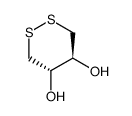 CAS#:74185-01-6
CAS#:74185-01-6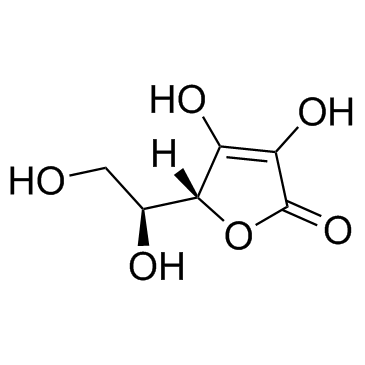 CAS#:50-81-7
CAS#:50-81-7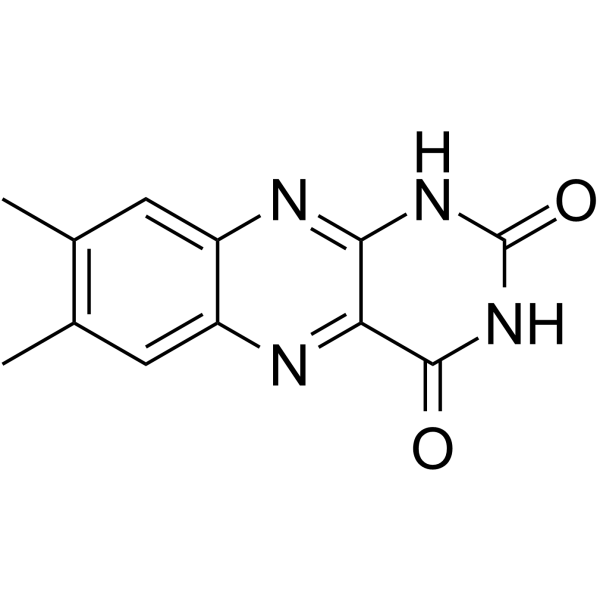 CAS#:1086-80-2
CAS#:1086-80-2 CAS#:108-98-5
CAS#:108-98-5 CAS#:882-33-7
CAS#:882-33-7 CAS#:2197-57-1
CAS#:2197-57-1 CAS#:86595-17-7
CAS#:86595-17-7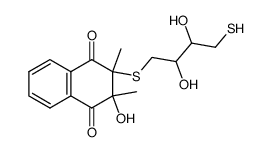 CAS#:86595-15-5
CAS#:86595-15-5
